This Is not a Text: Solo Exhibition of Kaspar Bonnén
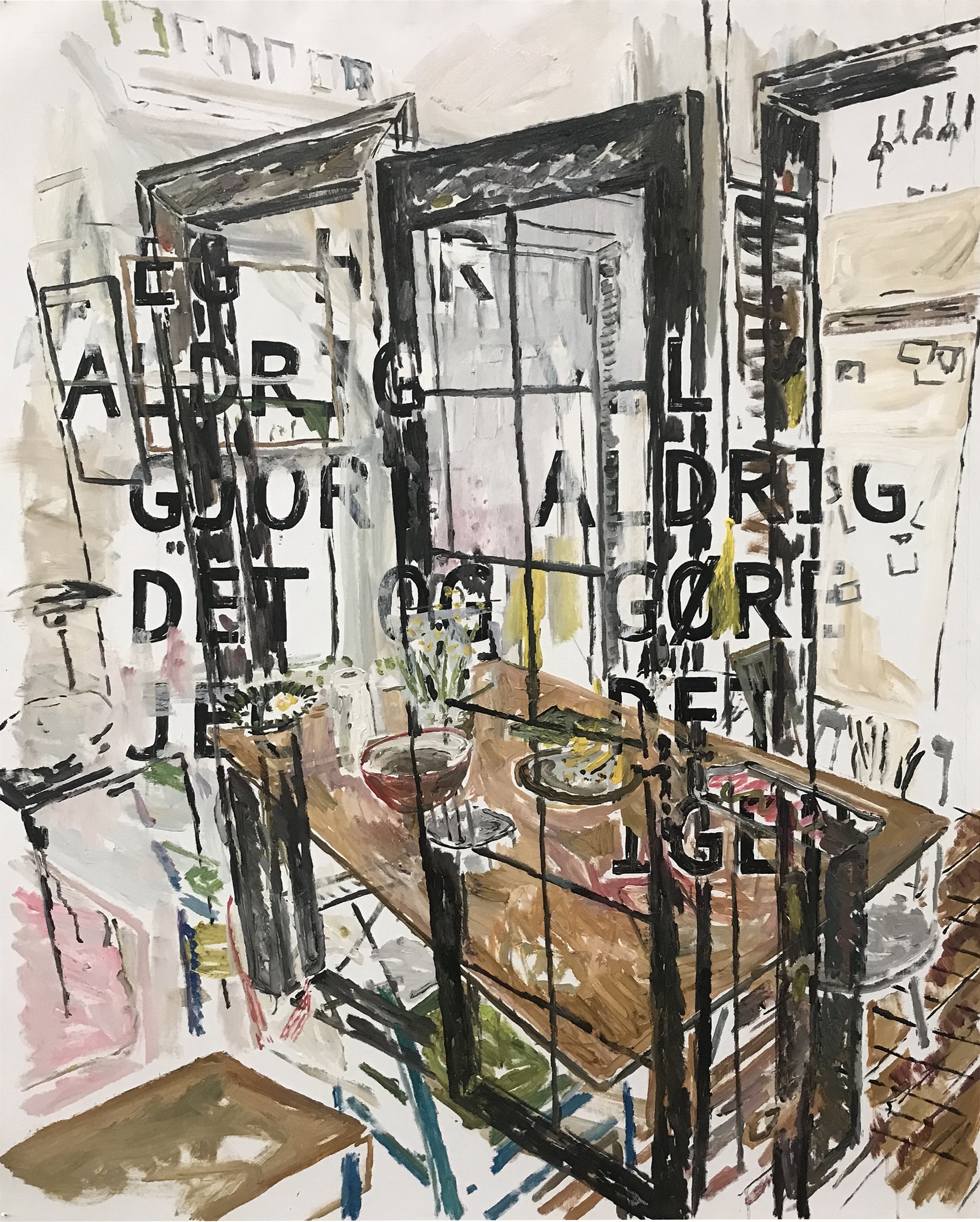
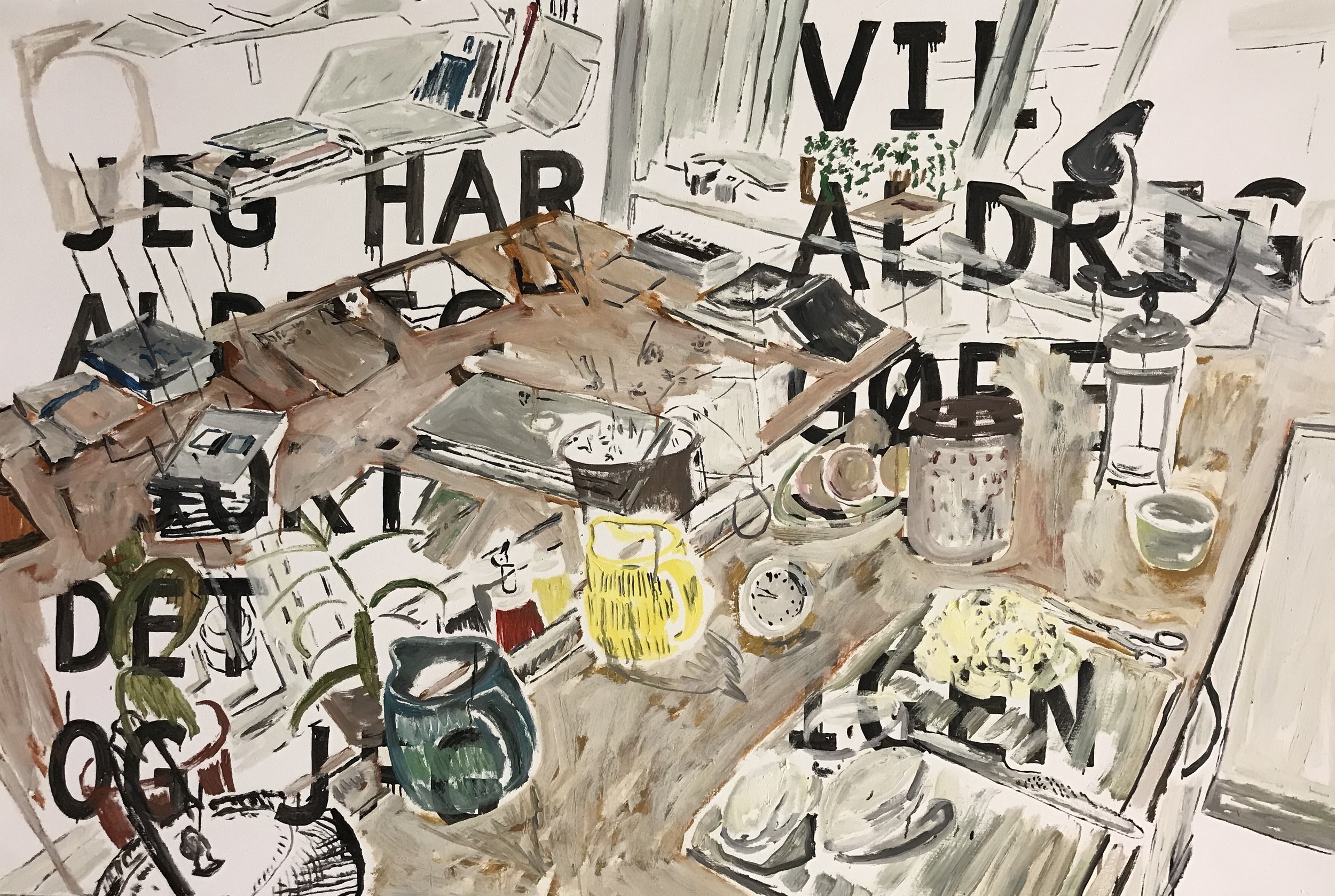
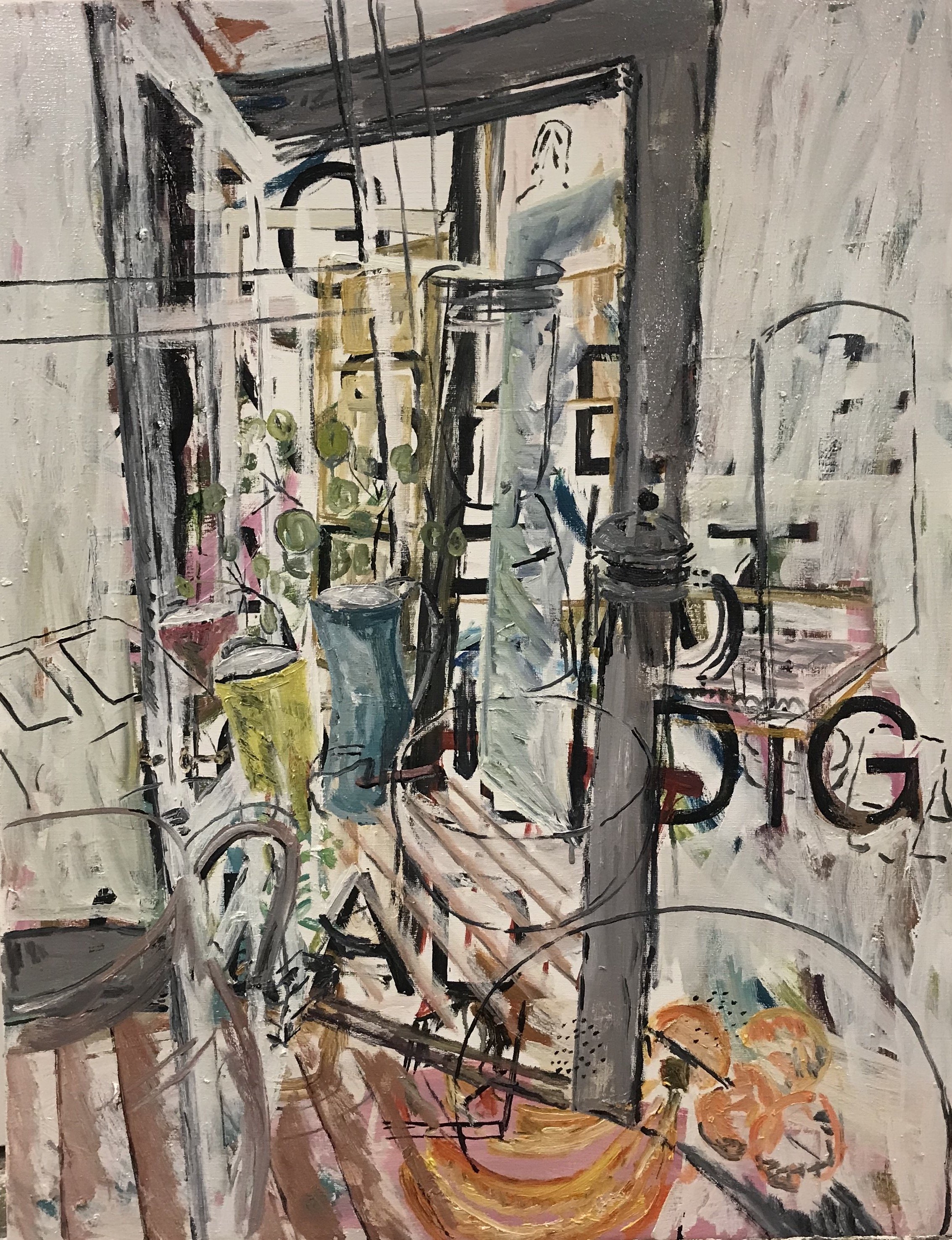

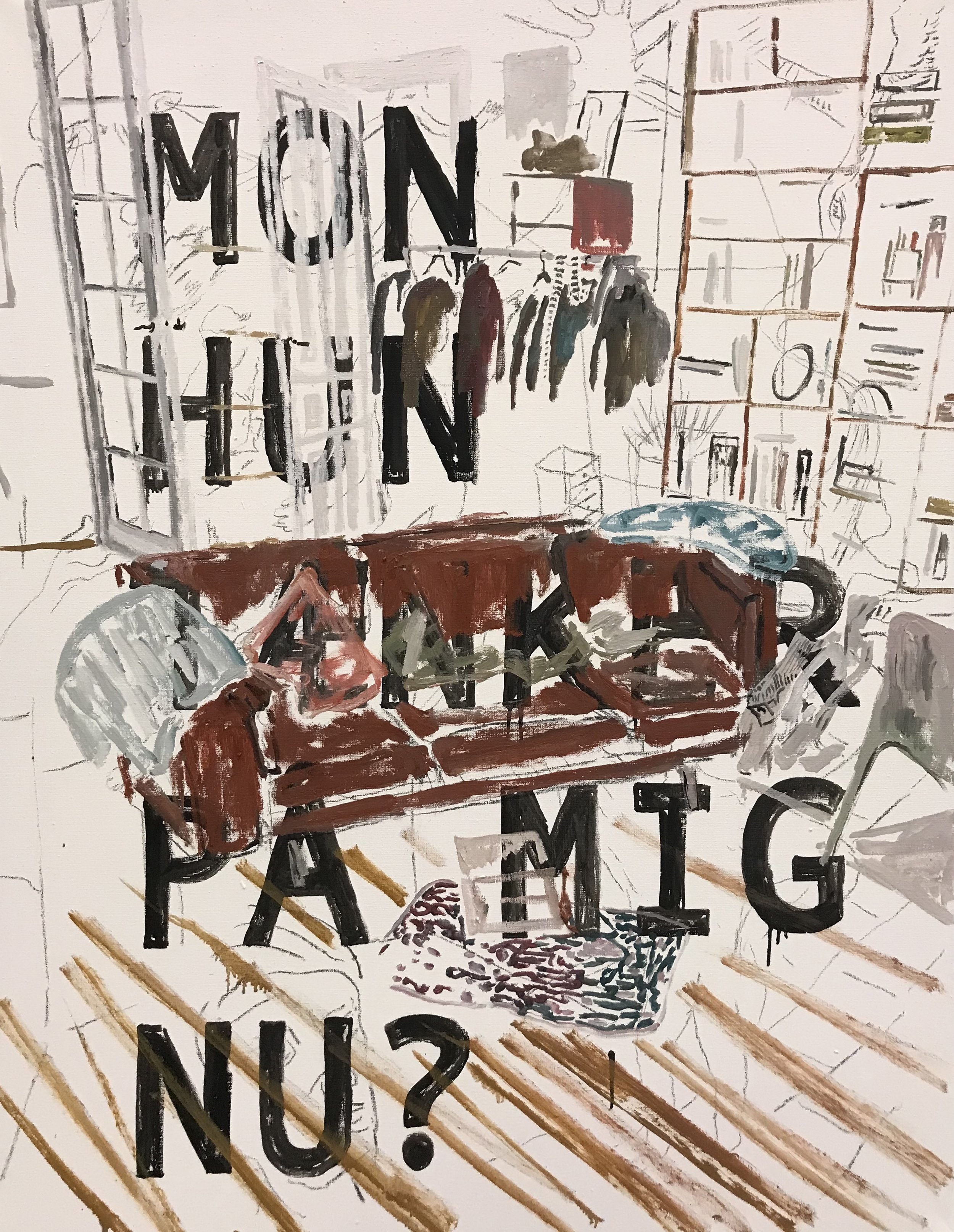
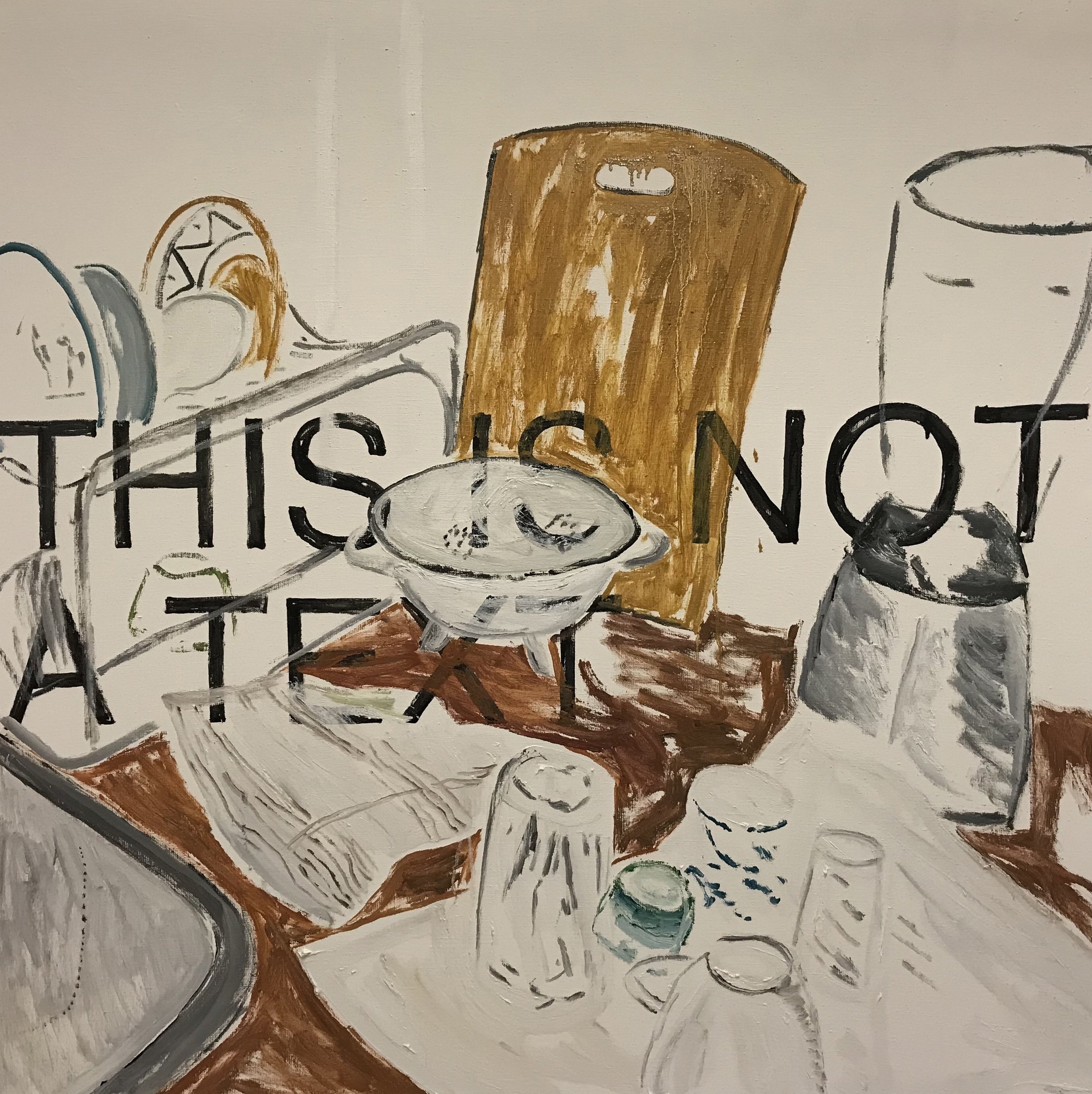
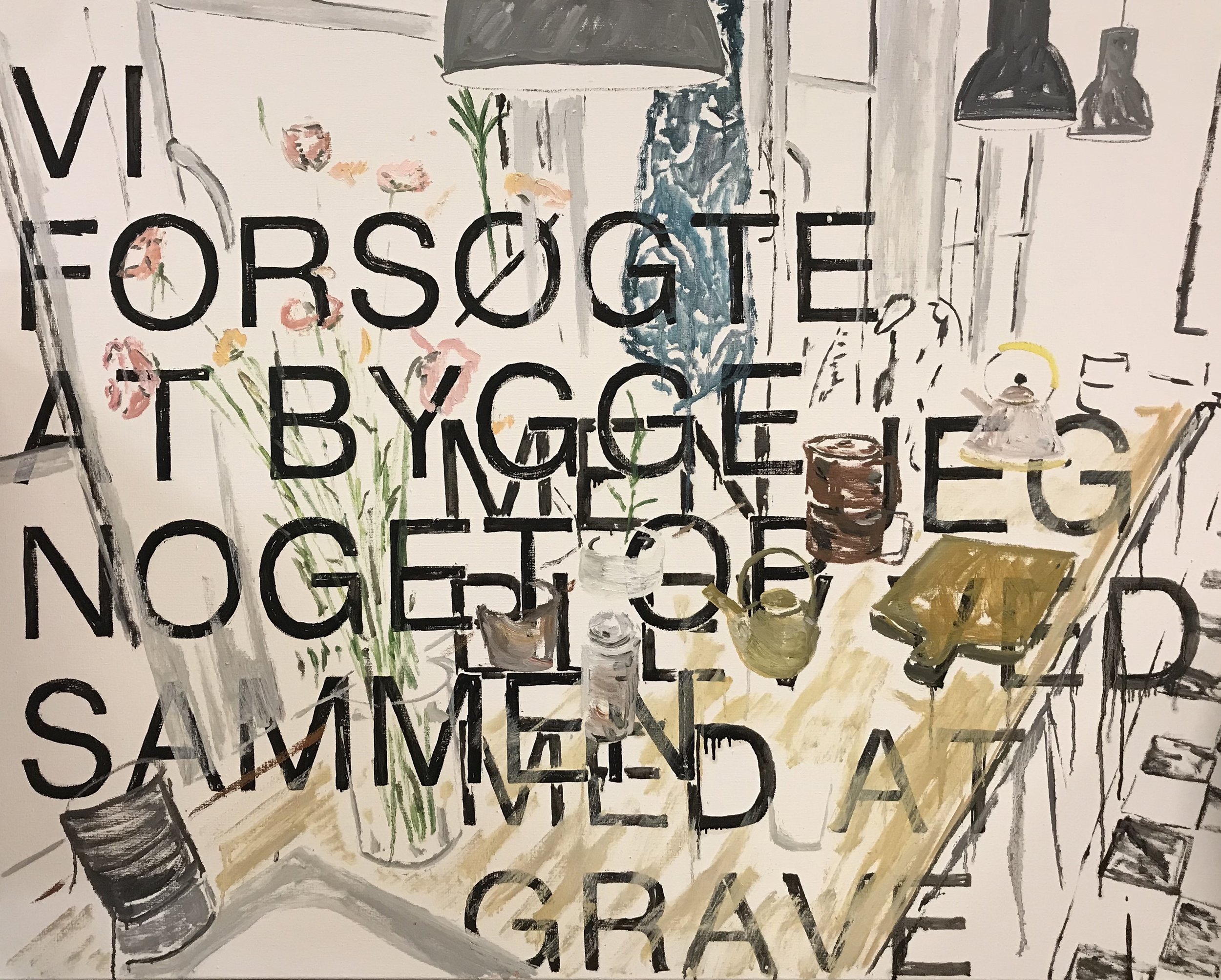
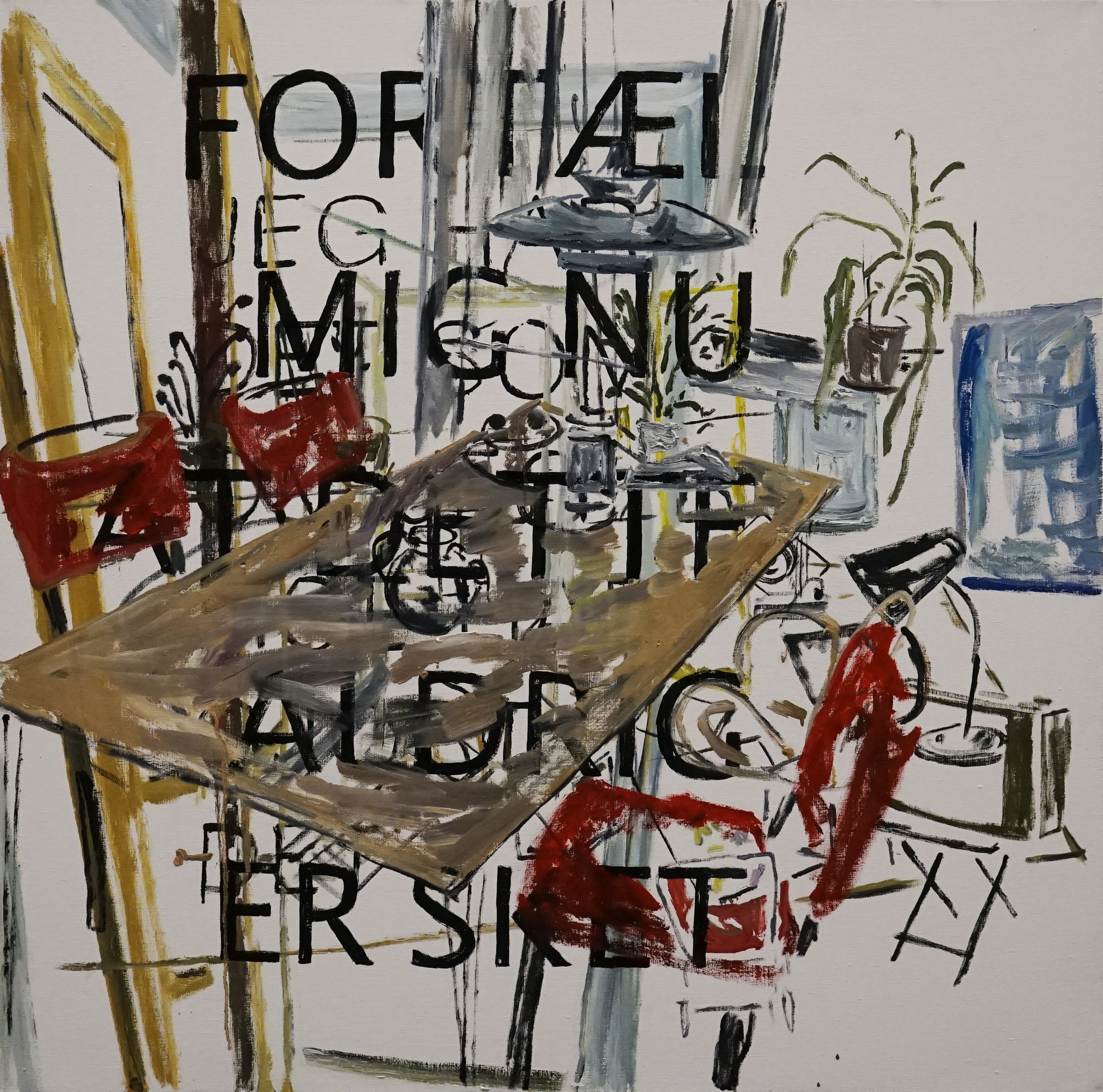
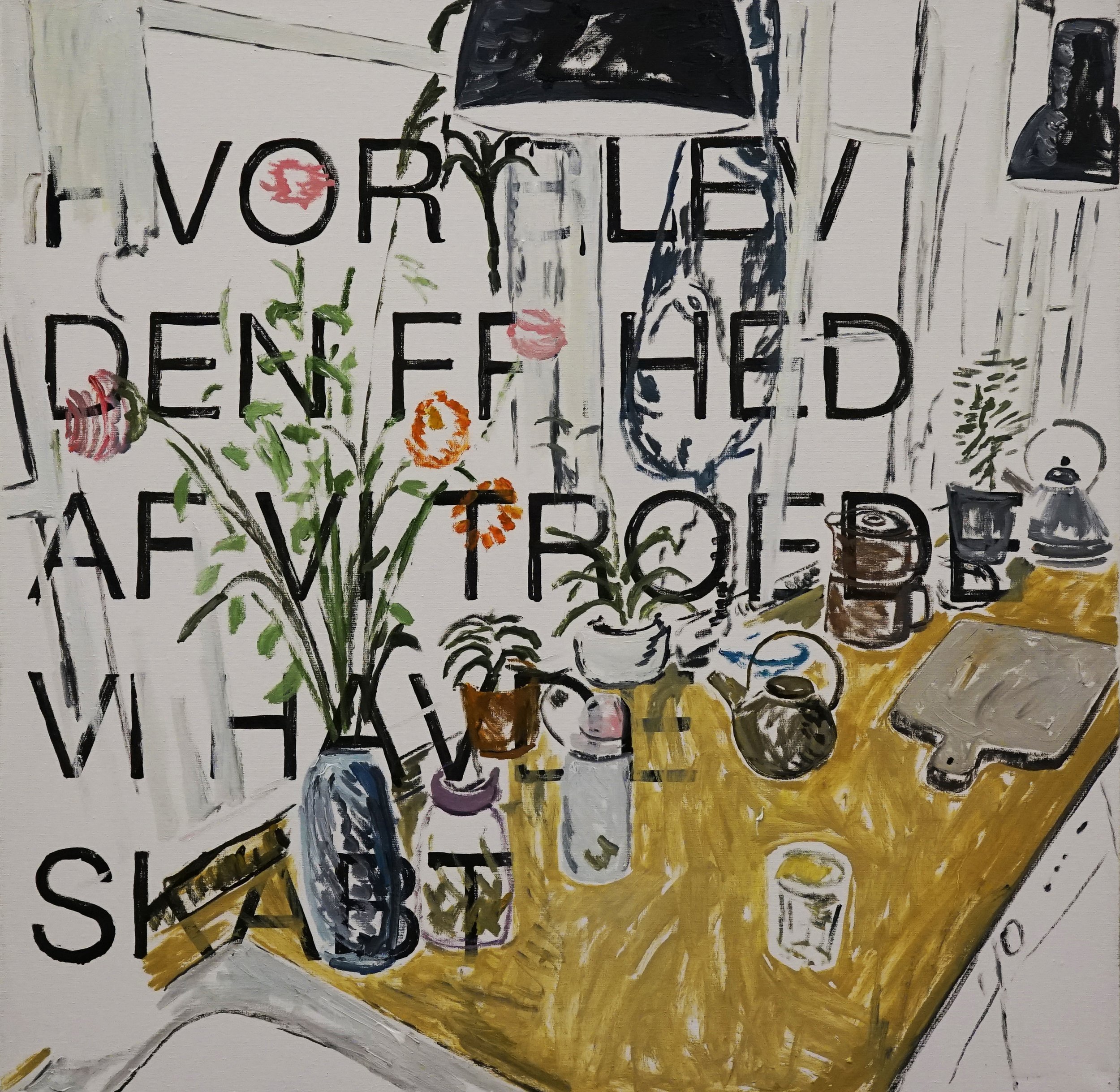
Danish artist Kaspar Bonnén’s paintings convey a sense of varied dimensionality of the spaces he depicts. The lines and colors that constitute the spaces, figures, and objects present simultaneously unrecognizable and recognizable spaces. What may seem unfamiliar to the viewer are the places the artist has lived, stayed, experienced, and felt throughout his life. However, an inherent sense of familiarity is conveyed through the emotions and feelings expressed in the works, allowing the evocation of one’s memories.
Kaspar Bonnén (b. 1968), graduated from the Royal Danish Academy of Fine Arts in 1999, and currently lives and works in Copenhagen, Denmark. Being a versatile multidisciplinary artist, Bonnén’s creative practice encompasses various art forms, including painting, sculpture, installation, drawing, photography, and poetry. His works focus extensively on the experience and memories of his childhood and private life, excavating the emotions and feelings therein. In the paintings, the artist often depicts spaces of personal significance in highly expressive ways, exploring the complicated feelings and emotions he once felt when he was in those spaces. In some of his works, the artist also uses everyday objects in paintings or installations to create a reinterpretation of his childhood experiences and memories.
For his solo show This Is not a Text with Nunu Fine Art in Taipei, nine of Kaspar Bonnén’s latest “text-paintings” were exhibited. As Bonnén has been experimenting with texts in some of his works in other media, the nine “text-paintings” presented in the exhibition marks the culmination of his research, exploration, and experimentation of integrating texts into images of painting. The text and images in each painting are carefully weighed, forming a tension that neither privileges the image nor the text, thus developing an equilibrium that adds to the interpretive possibilities of the work, thus allowing the private and personal elements in the works to find resonance for the viewer.
As an artist, Kaspar Bonnén is famous for his repeated exploration of “space” in his paintings. He has painted spaces of personal significance such as the living room, kitchen, bedroom, reading room and other house parts of his current and previous homes over and over again, returning on canvas to these memorable places and delving into the feelings and memories of spaces where he has lived and experienced throughout his life. For Bonnén, spaces of personal significance are vessels that contains the emotions and feelings he once had. They are the spatial embodiment of these memories and emotions.
Even though he sometimes paints the space loosely following the Albertian perspective, Bonnén’s works deals not only with physical spaces but also immaterial realms. In his paintings, he often deconstructs space and rearranges it in multi-dimensionality, letting the architectural structures, figures, objects, lines, and colors in the painting deconstruct and reconstruct into a kaleidoscopic palace of time and space that attaches to a multitude of personal memories, feelings, and emotions. This echoes what French philosopher Gaston Bachelard posits in his famous The Poetics of Space that architectural spaces not only provide physical shelters to individuals living the space, but also a shelter to the inner memories, dreams, and fantasies of the inhabitants. In other words, the space itself possesses an affective quality and poses certain influence on the human minds. Through deconstructing and reconstructing spaces on canvases, Bonnén relives his private memories, emotions and feelings, and turns them into magnificent works of art.
As a versatile artist who works in a wide range of artistic medium including the literary forms of poetry and novel, Bonnén experiments with bringing texts and letters out of the literary domain and inserting them into the realm of contemporary art. For those who are familiar with the artist’s oeuvre, they can surely notice the presence of texts in the artist’s works throughout the years.
Throughout his artistic career, Bonnén has been experimenting with text and letters as early as late 1990s. His Sleeping Politics (1999) is a direct challenge to public spaces via texts and sentences. In I Never Did It and I Will Never Do It Again (2000), Bonnén wrote sentences in large sizes on the bed and walls of a room with spray paints, marking an experiment on the intervention of private spaces with texts. In I Will Always Love You (2007), the artist took a step further, floating large blocks of letters to form a sentence on water, letting the letters gradually dispersed by the waves, thus disrupting the communicative function of the text. Later, in 2008, Bonnén presented I Said I Lost You but the Truth Is that I’ve Never Had You, a head-formed sculpture-installation that decomposes into plywood strips to eventually form sentences. In continuation of his challenge of public spaces, Bonnén created several “invisible graffiti” – making graffiti with easily erasable materials – as a way to artistically intervene publicly with texts regarding personal matters.
Therefore, even as a visual artist, Bonnén has been familiar with the effect textual elements create within a space, be it public or private. Therefore, the text-painting Bonnén created for this exhibition may be seen as an extension of his exploration of the potential of texts and sentences. This time, the artist eventually combined the textual elements with his oil painting, creating a polysemic symphony of texts and images.
Looking back to art history, the relationship between text and image was an ancient subject of debate. As Christianity resorts to icons and images on illuminated manuscripts, murals, and stained glass to proselytize the lives and teachings of Jesus Christ and the Holy Saints, iconoclasts and the Islamic religion forbid the visual representation of God and prophets and strictly adhere to the use of texts and letters in their religious teaching. The power of texts and images has long been a subject of debate that has an overhauling effect even on our modern civilization.
Being an artist moving in and out a wide range of artistic media, Kaspar Bonnén is concerned with the expressive power of text and images. On the one hand, he has been familiar with expressing himself with words and texts as a poet and a novelist. He has written novels and published his own poetry. Communicating thoughts and emotions through words and texts is what he has long been accustomed to doing. On the other hand, being a visual artist working with painting, sculpture, and installation also affords him the ability to express with images and objects of visual artistic creation. So, the two modes of expressions are not unfamiliar to him as he has wanted to find a way to combine these two into his works of art. However, as expressed in an interview with Nunu Fine Art, the artist found it very difficult to reach a balance between the text and the image in a single work. In some attempts, the text in a painting is overwhelmed by the painted image, while in some other attempts, the text is dominant and restricts the ways in which the painted image is viewed and interpreted. Reaching a creative equilibrium between the text and the image has been a central issue for Bonnén in terms of his text-paintings.
Among the works displayed in the exhibition, there is one painting that bears the name of the entire show “This Is not a Text”. One may immediately grasp the reference to famous surrealist painter René Magritte’s masterpiece The Treachery of Images (1928/29), which shows a meticulously painted briar pipe with the caption “Ceci n’est pas une pipe” (“This is not a pipe”) under the painted pipe. The discrepancy between the image and the text challenges our way of cognition while looking at the painting. It also paradoxically differentiates a real pipe from a painted visual representation of a pipe, destroying the illusory pseudo-indexicality that realist painting has possessed throughout the centuries, leaving the long-lasting impact on the reception of painted works in the following decades.
In addition to the work of Magritte, Bonnén also finds the works of two American contemporary artist, Christopher Wool and Richard Prince as especially relevant and sources of inspiration. Wool’s paintings of large, black letters on white canvases, explore how letters and sentences are deployed and placed on canvases and the interaction between letters and boundaries of the canvas. Often, the sentence, phrase, or word is split and run on to the next line. In the works of Prince, the artist includes jokes or one-line gags onto the monochromatic background of his paintings, therefore subverting the genre and formal language of abstract painting.
Working in this artistic genealogy, Kaspar Bonnén has drawn inspirations from the works of Magritte, Wool, and Prince, while carrying out his exploration in a different way and further pushes the artistic potential of text-painting. Seeing the text-paintings in This Is not a Text at Nunu Fine Art, we realized that the text and the painted image almost have the same weight in each work. In continuation with his previous exploration of lived and memorized spaces, the painted images of the text-paintings also show different spaces that relate to the artist. In the meantime, Bonnén incorporates a sentence with emotional undertone into the image, allowing parts of the letters to be covered or erased by the image. The sentence, therefore, cannot be immediately recognized upon the moment of looking so as not to dominate and limit the interpretive possibilities of the painting. The image of space and everyday objects within an image, such as chairs, tables, books, teapots, bowls, and cups, call for more attentive looking from viewers, summoning up in their memories their experiences of similar objects and spaces, as well as the emotions accompanied by these past experiences, creating a sense of relation beyond the mere personal. For example, most of us have the experience of facing a desk scattered with books just like the one painted in I Have Never Done It (2022) while being occupied by some other lingering thoughts in the mind. Or, as suggested in I Wonder If She's Thinking about Me Now (2022), looking at a cozy sofa that evokes a tender memory and wondering if your beloved one also misses you at the moment. Unlike Wool and Prince, Bonnén does not treat the image as a silence background for highlighting the painted texts; instead, he continues his previous exploration on the emotional dimension of spaces and speaks with painted spaces and the objects therein.
As to the text in Bonnén’s “text-paintings,” the artist selected several sentences and embedded them into his compositions. The sources of the sentences are diverse. Some of them come from the artist’s poetry, while some were just made up by the artist. Echoing Bonnén’s recurring exploration of emotions through his artistic practice, these sentences have varied emotional intensity. For example, the sentence in Please Tell Me This Never Happened (2022) implies a strong sense of denial from the speaking subject; another sentence in Where Did the Freedom We Thought We Had Created Go (2022) expresses the feeling of confusion and perhaps a sense of loss and remorse. The emotions expressed in these sentences add to the meanings of the paintings, providing various possibilities of interpretation.
Interestingly, when asked about how he chose the sentence to be put into a painting in the interview with Nunu Fine Art, Bonnén mentioned that he sometimes feels that the sentences may not convey what they literally mean. For instance, sometimes the person who utters the sentence may not speak with true heart but intends to lie or being sarcastic. Sometimes, the undertone of a sentence is picked up even though the speaker does not intend to mean that. Sometimes, one may accidentally utter a Freudian slip, expressing his unconscious without meaning to do so. The language is such an unreliable tool of expression and there are so many discrepancies between the intentions of the speaking subject and the words uttered. Thus, the meaning of the texts on the paintings may not be as concrete and fixed as they first appear to be. It can probably mean the exact otherwise to what is stated in the text.
This phenomenon leads us back to the Magritte-informed title of the show “This Is not a Text.” As Magritte’s painting is officially titled The Treachery of Images and points to the deceitful gap between an object and the visual representation of that object, the disruption between the signified and the signifier in the process of signification is revealed. This revelation also exposes the treachery or perfidy of the language, that is, the semantic gap between the speaking subject and the spoken/written texts. The sentence “This Is not a Text” neither provides us a concrete proof of its state as a meaningful text that expresses and communicates, nor does it prove otherwise. Instead, the superimposition of the text onto the painted image destabilizes their respective status as reliable tools of expression and communication, opening up possibilities to different interpretations of the work and allows the text-paintings to speak to a broader public. What initially appear to be the artist’s lyrical expression of his emotions and feelings, becomes an open question to the communicative quality of art, inviting people of different backgrounds and personal experiences to find their echo to whatever emotions and feelings raised up at the moment of looking at the painting. The private and the personal thus transforms into something shared by unspecified individuals.
In addition to the text-paintings in the exhibition, a series of drawings on printed paper by Bonnén are also presented in the exhibition. The “text-drawings” can be regarded as a reverse extension of the text-paintings created by the artist. In contrast to the text-paintings in which the artist paints the text and the image of private spaces on the canvas, these drawings are drawings of personal spaces created by ink on text-printed papers. The texts printed on papers were all written by the artist himself from a first-person perspective, and they are writings about family life, familial relationships, personal emotions and private feelings. These texts, sitting in the images of personal spaces quietly narrate moments of intense emotions in Bonnén’s life. Different from the texts and sentences in the text-paintings, which are relatively short, lacking in context, and have more possibilities of meaning and interpretation, the texts in the drawings provide relatively sufficient contexts for the audience to further understand. These drawings therefore become the poetry of emotions and memories that are slowly intertwined with words and images. Therefore, these “text-drawings” convey the artist’s exploration of private emotions and childhood memories in a way different from the text-paintings in the exhibition, forming a contrapuntal relationship to the text-paintings.
With the “text-paintings” shown in Kaspar Bonnén’s latest solo exhibition, This Is not a Text, we see how the artist started from subjects of very personal matters and explores the artistic and communicative qualities of paintings and texts. The incorporation of texts into paintings challenges the semantic concreteness of both the painting and the text, offering an openness that allows people to find similar and echoing experiences from the memories of their own. We may see Bonnén’s works as lyrical poetry distilled from his personal life, yet we all find our resonances in his text-paintings.
Artist

